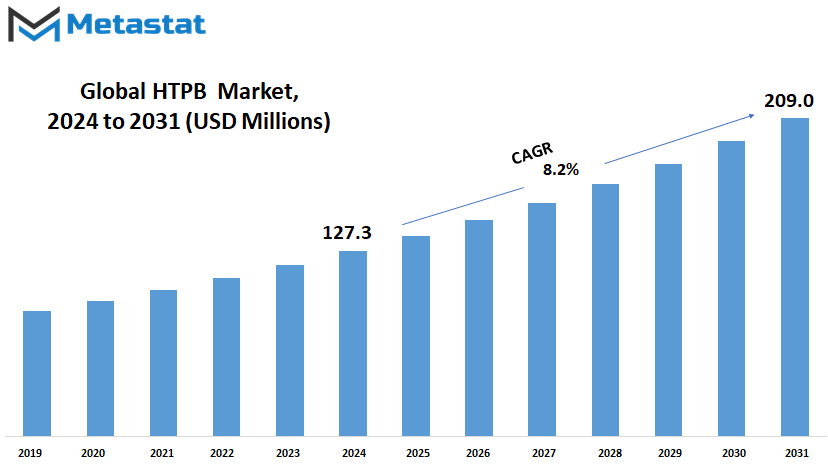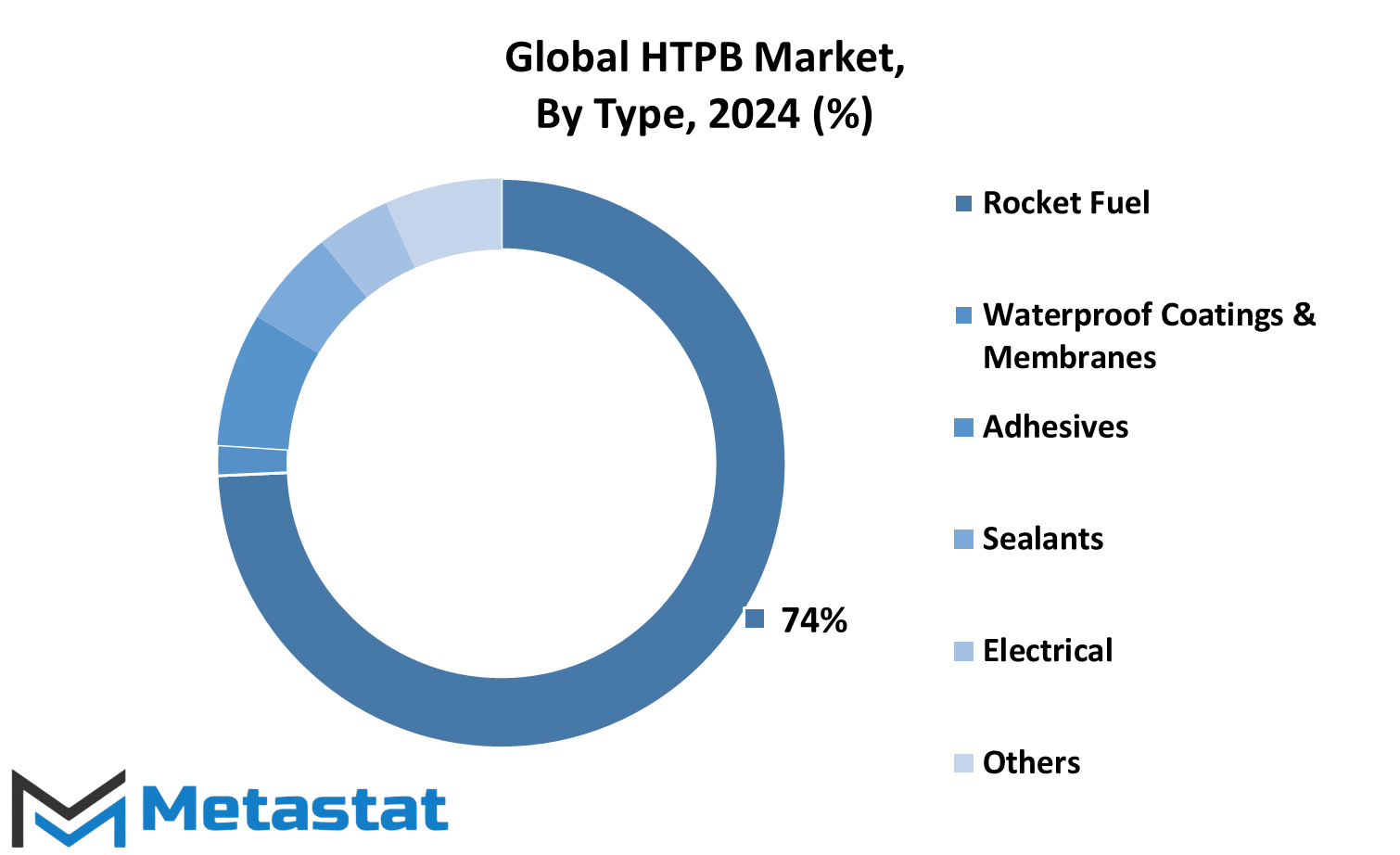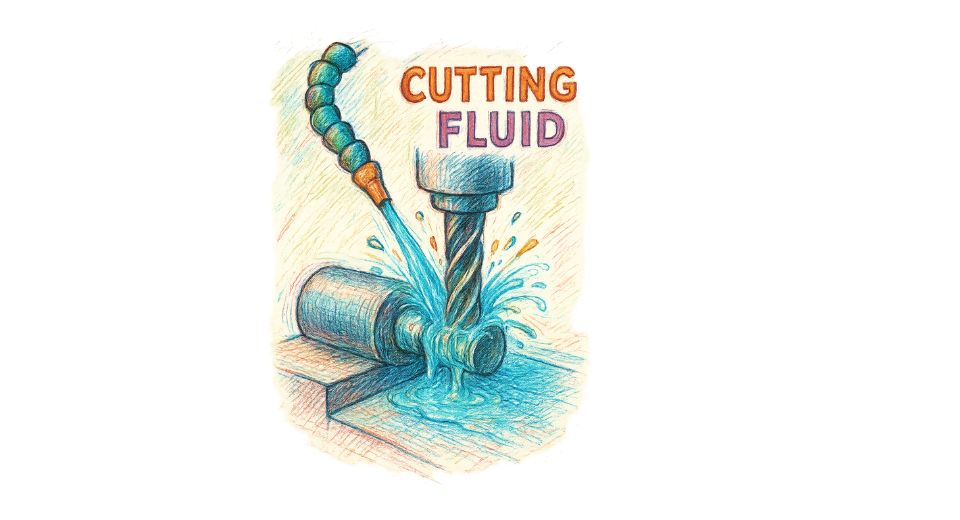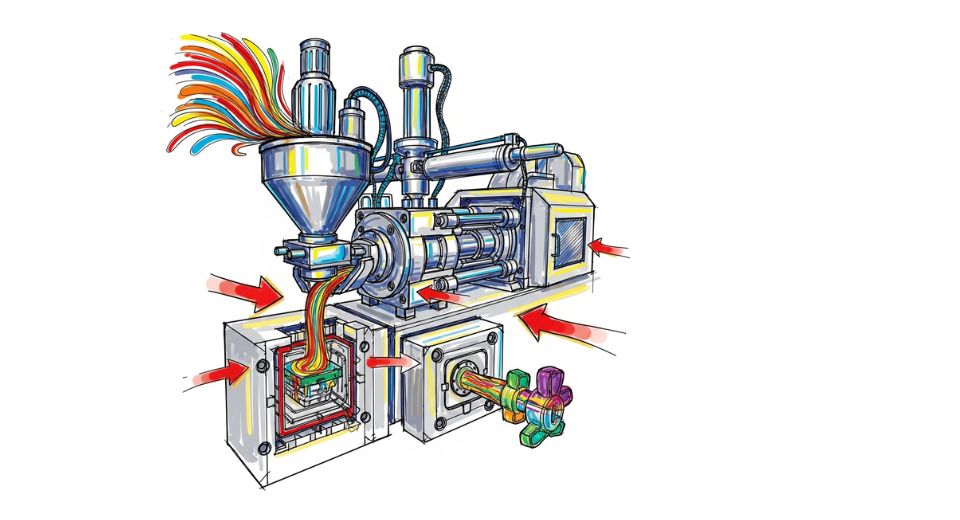MARKET OVERVIEW
The global HTPB market is a niche sector of the general chemical industry. Basically, HTPB could be considered a telechelic polymer that may find very useful use as a binder in composite propellants and in polymer matrices or sealants. Actually, compared to the generic material, it shows some very peculiar characteristics, such as a low glass transition temperature and high hydrophobicity and flexibility, which make it extremely suitable for special and high-performance uses. The demand patterns of the HTPB market will be idiosyncratic, reflecting the nature of the end-user industries it caters to.
One of the biggest factors that will drive demand for HTPB will be the various kinds of applications the product can be used for. In the aerospace and defence industries, among its most critical applications, HTPB will find an important usage in the formulation of solid rocket propellants, used in missile guidance systems and extraterrestrial launch systems. During its service life, this material will act like a binder in propellants, providing stable performance under extreme conditions, hence playing a very vital role in technological development in these fields. Moreover, the versatility of this material will further extend into the automotive field, where it is envisioned to be used in the production of high-performance tires and a number of other elastomers aimed at better durability and performance.
Innovation in the chemical industry will drive the global HTPB market. The continuous research being done will eventually find new applications and enhance existing ones. Its properties will only become more important when more efficient and more reliable materials are sought after. HTPB will find its way into advanced sealants and coatings in the construction industry that provide enhanced resistance to environmental factors and long-lasting performance. This will particularly be relevant in infrastructure projects, which require materials that can withstand very harsh conditions over long periods.
Environmental considerations will also play their part in determining the future of the Global HTPB market. Industries worldwide are moving towards greener and cleaner practices, which means there is going to be a closer look at the ecology of the materials being used for the production processes. Its pristine hydrophobic nature and stability will make the compound one of choice in applications where environmental footprint reduction is necessary. Moreover, new recycling technologies and the creation of bio-based variants of HTPB are likely to make the compound even more desirable, thus meeting global sustainability objectives.
Strategic collaborations and technological innovation leaps will have shaped the competitive landscape of the Global HTPB market. Research and development in the performance characteristics of HTPB will form a base for increasing its range of applications. New formulations and product variants will come up to meet new emerging requirements from the end-use industries. Companies will focus on enhancing their production efficiencies and reducing costs to make HTPB a viable option in both terms: on performance and the economic front.
Most of the market dynamics will be based on regulatory frameworks. The governments and regulatory bodies across the world will come up with strict standards that assure that HTPB is effectively and safely used in all its applications. The regulations will hence be very fundamental to the market players and will influence product development and quality control processes. Companies operating in this market will thus need to keep updating themselves on regulatory changes and change accordingly.
The Global HTPB market will be driven by technological developments, environmental concerns, and regulatory requirements. Having marvelous properties, the use of HTPB will not only expand into high-performance applications like aerospace, defense, automotive, and construction but will also continue to be the lead material and application development in the future with innovation efforts and strategic steps taken by stakeholders. It will not only reflect the current demands of various industries but is also going to adapt itself to the future technological and environmental trends.
Global HTPB market is estimated to reach $209.0 Million by 2031; growing at a CAGR of 8.2% from 2024 to 2031.

GROWTH FACTORS
The growth of the global HTPB market shall be rapid in the resting years, mainly due to growing demand from the aerospace and defense sectors for solid rocket propellants. Country interests in missile technology and space exploration are increasingly expanding; hence, the demand for high-performance materials like HTPB is only set to rise. With this growing emphasis on strengthening defense capabilities, the demand for solid rocket propellants that provide both reliability and performance is bound to rise.
In rocketry and missiles, most of their use is in aerospace, while apart from these, the application includes but is not limited to HTPB being used in adhesives and sealants for the automobile and construction industry. These industries increasingly rely on HTPB due to its excellent bonding property and durability. The key goals of automotive manufacturers, such as lightweight solutions with fuel efficiency, are likely to boost the demand for HTPB-based adhesives. The construction segment also encourages projects oriented toward sustainability and strength, which would come up with HTPB materials and increase their attractiveness.
Several factors could hamper growth in the global HTPB market. Among these, the high production cost associated with HTPB and its complex manufacturing processes are major restraints to market growth. The maintenance of profitability could, however, easily come at the cost of product quality, which may hamper wider market penetration. In addition to the stringent regulations on the use of chemicals, growing concerns about the environment may slow the pace of growth in HTPB. Companies have to take cognizance of these regulations in their effort to ensure conformity while meeting market demand.
Yet, despite these odds, opportunities may sprout to hugely improve the potential of the global HTPB market. One such opportunity is the discovery of environment-friendly and cost-effective techniques of producing HTPB. New inventions focused on making the production greener may result in more industries being attracted to working with this material. With sustainability topping the priority chart of industries today, such developments are surely going to increase the applications and demand associated with it.
Despite several growth drivers, the future looks only somewhat promising for the global HTPB market. Growing demand in aerospace and defense, together with its expanding Applications in the industries of Automotive and Construction, shall open up an avenue for growth in the market. However, reducing production costs and overcoming the regulatory challenges are necessary if these opportunities are to be seized. For the global HTPB market, continuous changes in times, with a focus more into sustainability, remain tremendous prospects for business and large industries.
MARKET SEGMENTATION
By Type
In the near future, the global HTPB market is likely to grow significantly owing to diversified applications across a wide array of industries. The product market includes rocket fuel, waterproof coatings and membranes, adhesives, sealants, electrical components, and several others, which are expected to expand with growing demand for advanced materials with high performance and reliability.
Rocket fuel is another vital segment of the global HTPB market. Due to its extremely high energy density and stability, HTPB, or Hydroxyl-terminated polybutadiene, is useful in propellants related to space exploration and military missions. As nations invest in their space programs, the demand for reliable and efficient rocket fuel will persistently increase, thus fueling growth in this segment.
Another area in the global HTPB market is waterproof coating and membranes. These materials offer very good resistance to moisture and therefore become an important material across various industry sectors, from construction through the automotive industries. With rising focus on green building practices and durability, its demand will rise further. With improving technologies, new formulations will come out that shall help in making these coatings more efficient and green-friendly.
Beyond these will lie other great potentials of HTPB-based adhesives and sealants that would very strongly contribute to the future of the market. Such materials are put into place for the formation of strong bonds, which extend from manufacturing to consumer goods. With industries continuing to seek solutions that improve performance while reducing weight and enhancing efficiency, applications of HTPB-based adhesives are likely to spread further.
Additionally, the electrical segment will also benefit from the versatility of HTPB materials in a number of electronic applications for which they are selected and noted for their excellent insulation properties. The requirement for HTPB in this sector will, therefore, grow with the advancement of industry in electronics, mainly those requiring high thermal stability and resistance to chemicals.
With increasing technological advancement, the global HTPB market will go on changing the way it is used today. The exploration in aerospace, construction, and electronics is not going to stop; hence, innovation and a demand driver for HTPB will definitely be there, making it very critical in the future landscape of these industries. Hence, owing to a wide range of applications, the market grows significantly in its share and underlines the importance of HTPB to meet challenges of tomorrow.

By Application
The growth curve of the Global HTPB market shall be truly remarkable in the next few years, through a variety of applications cutting across several industries. HTPB, or Hydroxyl-terminated polybutadiene, is fast gaining recognition for its versatile properties that make it a very important material in several sectors. Now, the construction and civil engineering sector will remain one of the prominent driving factors.
Increased infrastructure projects worldwide will raise demands for construction materials that are more durable and resilient. With good mechanical strength and very aggressive resistance to environmental conditions, HTPB is a material that can find excellent use in such applications. The Global HTPB market will also log decent growth in the aerospace and defense sectors. This material is valued under high-stress environments, deeming it very useful for a myriad of uses from rocket propellants to sealants. As space exploration efforts increase and defense technologies evolve, demand for high-performance materials like HTPB will escalate.
The automotive industry will be another key area where HTPB will find extensive usage. Facing continuous demand for electric vehicles and a turn toward lighter components for efficiency, it is to be expected that manufacturers will turn to HTPB for its lightweight yet strong characteristics. This greening trend in the design of the automotive industry is the very reason this material is going to even gain more importance in vehicle making.
The electrical and electronics industries also form part of the areas in which growing incorporation of HTPB into applications will be witnessed. In accordance with improving technology, demand will rise for materials capable of withstanding extreme temperatures with excellent insulation properties. It is, therefore, in a very good position to answer upcoming challenges, thus remaining paramount in the production of high-performance electronic components.
Besides these larger sectors, other applications will develop which by itself shall grow the Global HTPB market. The industries seeking new solution-based ones would more and more find the benefits of using HTPB and finally gain even clearer adherence.
When these applications will be maturing, the market dynamics will change for both manufacturers and end-users, giving way to bringing up newer opportunities and challenges.
The Global HTPB Market will continue to grow as advanced technologies take over, becoming one of the most critical materials for building a prosperous future. These distinctive properties of the material will not only add to the enhanced performance of these many industries but will also be seen supporting sustainability goals in the industries that will turn out to be a key player in this consistent push toward innovations.
|
Report Coverage |
Details |
|
Forecast Period |
2024-2031 |
|
Market Size in 2024 |
$127.3 Million |
|
Market Size by 2031 |
$209.0 Million |
|
Growth Rate from 2024 to 2031 |
8.2% |
|
Base Year |
2022 |
|
Regions Covered |
North America, Europe, Asia-Pacific Green, South America, Middle East & Africa |
REGIONAL ANALYSIS
The global HTPB market is analyzed geographically for strategic analysis in areas such as North America, Europe, Asia-Pacific, South America, and Middle East & Africa. Random regions form a very critical part in shaping the market dynamics and future prospects of HTPB.
North America, including nations such as the United States, Canada, and Mexico, is leading in the consumption of HTPB. Advanced technological infrastructure and a strong industrial base drive major demand in the defense aerospace and automotive industries. An ever-increasing drive for innovation in making processes, coupled with a growing focus on green and sustainable solutions, is going to further fuel growth in the HTPB market in this region.
In case applications, U K, Germany, France, and Italy and the balance of Europe present a wide heterogenous landscape for HTPB applications Europe's strict environmental regulations lead to the growth of materials, which are more eco-friendly. These support HTPB's various potential application in sectors like construction and electronics. The ever-increasing application profile of HTPB in such niche applications as sealants and adhesives confirms the adaptability of this binder with respect to different market tests.
In Asia-Pacific, it consists of India, China, Japan, South Korea, and the rest of Asia-Pacific; rapid industrialization and infrastructural development would generate substantial demand for HTPB. HTPB market growth would be positive due to the budding aerospace industry and increasing investments in defense capabilities in the region. In addition, the ongoing trend of space exploration and satellite manufacturing, as in the countries of India and China, would drive the demand for HTPB-based propellants and insulation materials.
In its turn, South America, which mainly comprises of Brazil and Argentina and the rest of the countries within it, presents the opportunity of emergent use in HTPB applications. The initiatives that many countries in this region are driving towards increasing the agricultural output and promoting the automotive manufacturing industry make conditions highly conductive to the use of HTPB in manufacturing tires and agricultural machinery components.
Lastly, the Middle East & Africa, including GCC Countries, Egypt, South Africa, and the rest of Middle East & Africa, suggests a lower penetration for HTPB in the oil and gas segment due to its Properties of sustainability in the most undesirable environmental conditions. The spending on infrastructure development and rising aerospace ambitions in the region support the prospects for the HTPB market.
Similarly, with the dynamism of newer technologies coming into play and applications in a much wider array of industries, these are trends that will continue to shape the future of HTPB globally. Collaborations and innovation will perhaps chart the future trajectory of HTPB globally, where market participants use regional strengths fully and leverage them in the best possible manner while navigating the regulatory landscapes.
COMPETITIVE PLAYERS
The HTPB market holds huge potential to grow in the coming years due to technological advancements and increasing demand for high-performance materials. Hydroxyl-terminated polybutadiene is an important polymer that has been in use within industry circles, particularly in the aerospace and defense industries. Such characteristic features as good adhesion, resilience, and stability at different temperatures will further add to the demand from manufacturers.
Key market players in HTPB are exploiting these trends. Companies such as Evonik Industries and Total Cray Valley are already far advanced on new formulations and optimized production processes. Their chemical expertise on polymers puts them in a good position to design tailor-made solutions to better meet the changing requirements of their customers. On the other hand, Idemitsu Kosan and CRS Chemicals are likewise developing new ways of increasing their product lines to stay competitive in the rapidly changing marketplace.
Other major factor inputs for the Global HTPB market include Island Pyrochemical Industries and Zibo Qilong Chemical Industry. The shifts toward sustainability and being environmentally friendly by these companies are most likely to appeal to an increasingly environmental culture in the customer base. To do this, these companies—already meeting market demand today—are preparing their future as well.
Monomer-Polymer and Dajac Labs, RCS Rocket Motor Components, Inc., and Emerald Performance Materials are some of the companies in the HTPB value chain that contribute significantly with their components and materials to the performance enhancement of final products. Innovations of new applications in terms of HTPB use and development of new applications in industries related to companies, particularly those pertaining to automotive and electronics, are likely to be continued due to growing demand for advanced materials.
One of the major companies involved in shaping the future of the Global HTPB market will be Nippon Soda Co., Ltd. Its commitment to R&D will maintain the development of more efficient and effective formulations of HTPB, necessary for the requirements not only of various sectors but beyond, into new applications. Closer cooperation by such companies will further drive progress in the HTPB market.
Ultimately, the Global HTPB market shall grow in leaps and bounds because companies take the lead in innovation and adapt to emerging trends. The corporation's venture towards more innovative high-performance materials, along with practical long-term sustainability, will remain vital for companies to be successful through a changing environment. After all, HTPB markets surge ahead driven by technological advancement and commitment to serve the diverse industries.
HTPB Market Key Segments:
By Type
- Rocket Fuel
- Waterproof Coatings & Membranes
- Adhesives
- Sealants
- Electrical
- Others
By Application
- Construction & Civil Engineering
- Aerospace & Defense
- Automotive
- Electrical & Electronics
- Others
Key Global HTPB Industry Players
- Evonik Industries
- Total Cray Valley
- Idemitsu Kosan
- CRS Chemicals
- Island Pyrochemical Industries
- Zibo Qilong Chemical Industry
- Monomer-Polymer and Dajac Labs
- RCS Rocket Motor Components, Inc.
- Emerald Performance Materials
- Nippon Soda Co., Ltd.
WHAT REPORT PROVIDES
- Full in-depth analysis of the parent Industry
- Important changes in market and its dynamics
- Segmentation details of the market
- Former, on-going, and projected market analysis in terms of volume and value
- Assessment of niche industry developments
- Market share analysis
- Key strategies of major players
- Emerging segments and regional growth potential








 US: +1 3023308252
US: +1 3023308252






